Oil Painting | Malcolm T. Liepke: The Emotional Connection in Figure Paintings


Malcolm T. Liepke attributes his success with his figure paintings to making art that is both personal and universal. “I see a girl with her head a certain way, and I find it telling, emotional, and I want to communicate that certain truth,” the Minneapolis-based artist says. “That truth or emotion makes us feel less alone, more human. Everyone goes through life with their own problems, but we live in a pretty universal world. I’ve found that the more personal the piece, the more people connect with it.”
Liepke paints only the subjects that interest him, and he works in the most time-effective manner possible, maintaining some 20 to 30 figure paintings in progress at once. While maximizing his output to the galleries, his approach satisfies his desire to work loosely and spontaneously, making every brushstroke count.
Finding the Right Subject

To find his subjects, Liepke simply looks at the people around him. He takes photos or makes drawings of the ideas that strike him and then pins them to a large wall in his studio.Occasionally he hires a model to pose but tends to rely on his photos to save the time and expense of posing. He turns to his imagination for the interiors, explaining, “I want to be free to do what I want.”
The artist describes the photos and sketches as merely a starting point from which he can make changes in the hair or clothes of the figures to suit the piece. He does, however, retain the distinctive features of the individual in his references. “You can’t make up features,” he explains, “because the people will look cartoonish.”
Creating the Composition
Usually, the artist combines several ideas from the wall into one composition. “It’s too time-consuming to thumb through a notebook or make a storyboard, so I just scan the wall and start combining several ideas,” he says.
Liepke then makes a thumbnail drawing in graphite to play with the composition, moving elements around to experiment with different combinations. Next, he blocks in the sketch with oils on canvas, creating a full-spectrum layout.
The figures are rough at this stage, but he has established the overall feeling in terms of both color and composition. To Liepke, this is the most critical stage of the process: “After I block in a painting, sometimes it will paint itself. I’ve decided the attitude of the piece, and I know whether or not it will work. If the painting fails, it does so at this level.”

At any given time Liepke could have up to 30 human figure paintings at this stage scattered around his studio. “If I get stuck on one painting, I can go on to another, then I come back to it later,” he explains.
Working Wet-in-Wet
When returning to a painting, Liepke first lays a glaze of roughly equal parts of linseed oil, clove oil and poppyseed oil over the color block-in. This process, which he refers to as “oiling up,” allows him to work wet-in-wet. (He uses the mediums throughout the painting process to slow the paint’s drying time.) Typically he builds the flesh tones and refines the face and hands. If he, again, feels inhibited in trying to finish the painting, he sets it aside and turns to another using the same process of “oiling up.”
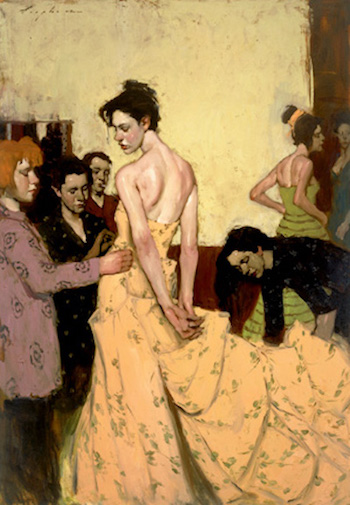
Working on a wet canvas is critical to Liepke’s approach to painting figures, which he modeled after the techniques of his heroes, John Singer Sargent and Velázquez being chief among them. Liepke especially admires Sargent’s virtuosity in painting with a loaded brush, wet-in-wet, and Liepke’s careful and nearly fully resolved layout of the composition ensures he will make few revisions while painting and retain the directness and spontaneity he desires.
Want FREE oil painting tutorials? Enter your email below and start enhancing your oil painting skills!
[fw-capture-inline campaign=”RCLP-confirmation-oil-painting” thanks=”Thanks for downloading!” interest=”Art” offer=”/wp-content/uploads/pdfs/OilPaintingTechniques.pdf”]
He works loosely and aims to communicate as much information as possible in the fewest number of strokes. “Learning to edit, to keep loose, is a lifelong process,” the artist says. “In the beginning, it’s natural to noodle everything to death, but slowly you can learn to say more with less, to make sure each brushstroke has meaning.”
Like Sargent, Velázquez employed color and composition brilliantly, but more than Sargent, the Spanish master captured a sense of the subject’s essential being. Traveling to the Prado, in Madrid, as part of a period of self-education he undertook after leaving the Art Center College of Design, in Pasadena, California, in the mid-1970s, Liepke came to view Velázquez’s paintings as the embodiment of everything he admires in art: The timelessness of the figure achieved through an objective and expert rendering of the subject’s features, clothing and setting.
Contemporary Painting
Despite Liepke’s close ties to past masters, he insists on painting contemporary people in their own time. Omitting details that would place a subject in the 21st century to make the images more universal, the artist often chooses themes of isolation and ambivalence—as relevant now as in the 17th century.
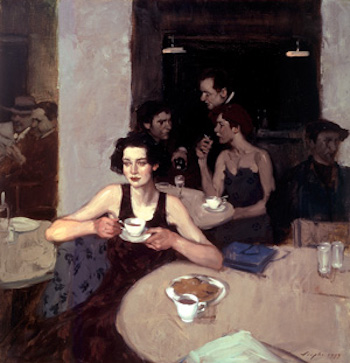
“It comes down to what your truth is,” he said in an interview for a retrospective of his work. “Heroes helped me express my vision of the world. I’m a figure painter, and I use figures to express what I want to say, to fit the statements I wish to make. I choose the things, large and small, from the artists I admire, to help me in the pursuit of human truth.”
Liepke’s painting surface is Claessens Belgian linen canvas, which he buys by the roll and stretches as needed. He keeps six varieties on hand, from rough to fine. For brushes, he favors Robert Simmons filberts in Nos. 1 to 22. His paints comprise about a dozen manufacturers, with Grumbacher, Holbein and Rembrandt dominating. He premixes his grays by combining yellow ochre or raw sienna with black and white, and he mixes all his colors with varying amounts of this gray. He also premixes some flesh colors.

“My color choices are pretty instinctual,” Liepke says. “I just look at the work of artists I admire and try to learn from them. It’s about personal taste, but I tend to like a yellowish, grayish green for the flesh tones to play off the oranges and pinks.”
As Liepke’s work has matured, his palette has shifted from darker values to a bolder and more diverse selection of colors. One explanation is simply that he moved to a brighter studio, but the artist also wanted to prevent himself from becoming formulaic so he modified his color selection accordingly.
His painting process, despite—or perhaps because of—the careful planning in the beginning, allows intuition to dominate. “When I’m in that zone, it’s child’s play, although on some deeper level, I know what I’m doing and why,” he once said. “The biggest thing about my art is getting my mind to open to the point where it comes tumbling out. I can’t think about brushstrokes. If I think too consciously, my arm freezes up.”
From Past to Present

Before he turned to fine art in the mid-1980s, Liepke worked as an illustrator for such clients as Forbes and Time—a career that, despite its success, was touched by disappointment. “There’s no great art by committee,” he says. “I left illustration because I was tired of the compromise, of being a square peg in a round hole. I would know a painting was finished, but the art director would decide what was right or wrong with it. It was too much of a fight, and I knew I was in the wrong profession.”
Clearly, the move to fine art has fulfilled Liepke on many levels. He describes himself as emotional and says that his strength comes from the emotional impact he pulls out of the work.

“Although I do think about the things I am expressing, I try to make it as direct as I can—I try not to get in the way of the emotions,” he once said. “In essence, I believe that no matter how alone we may feel in the world—how we imagine we are experiencing things in a vacuum—we all share the same human experiences. We all have the same basic needs for connection, love and understanding. I try to reach those universal needs; it’s what’s primal in art. I try to say it through mood, color, atmosphere and texture. Bottom line: It’s the [emotion], and I just want to get it out. It’s difficult to express through words things that are so beautiful that they have no words. I can’t explain it. I have to paint it.”
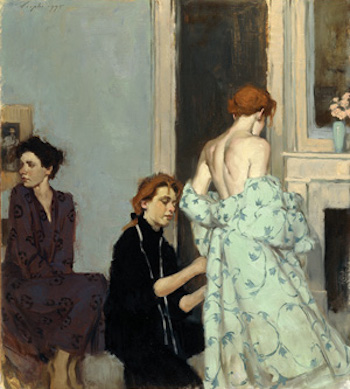
About the Artist
Malcolm T. Liepke is primarily a self-taught artist, having learned most of his technique by emulating the style of the American Impressionists and other artists. He has participated in numerous group shows, including U.S. Artists “Re-Presenting Representation” and the International Fine Art and Antiques Fair. The artist’s work hangs in several private and public collections, including those of the National Academy of Design, in New York City, and the Estate of Armand Hammer. Liepke is represented by Arcadia Contemporary (aka Arcadia Fine Arts), in New York City.
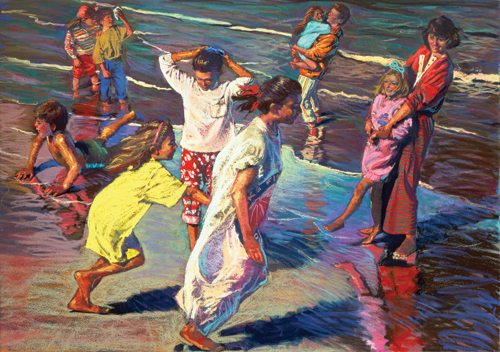
This article was written by Lynne Moss Perricelli, a freelance writer and editor in New Jersey.

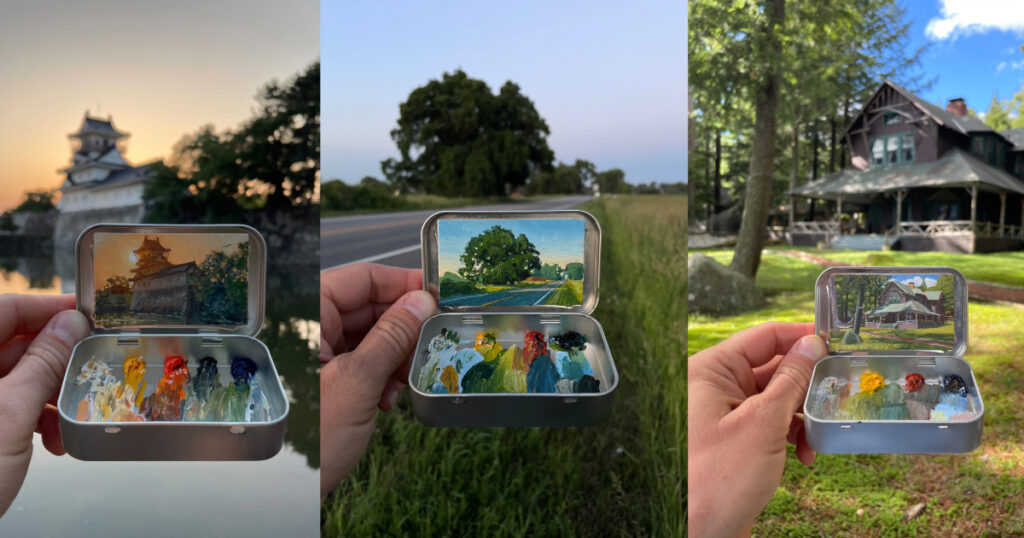

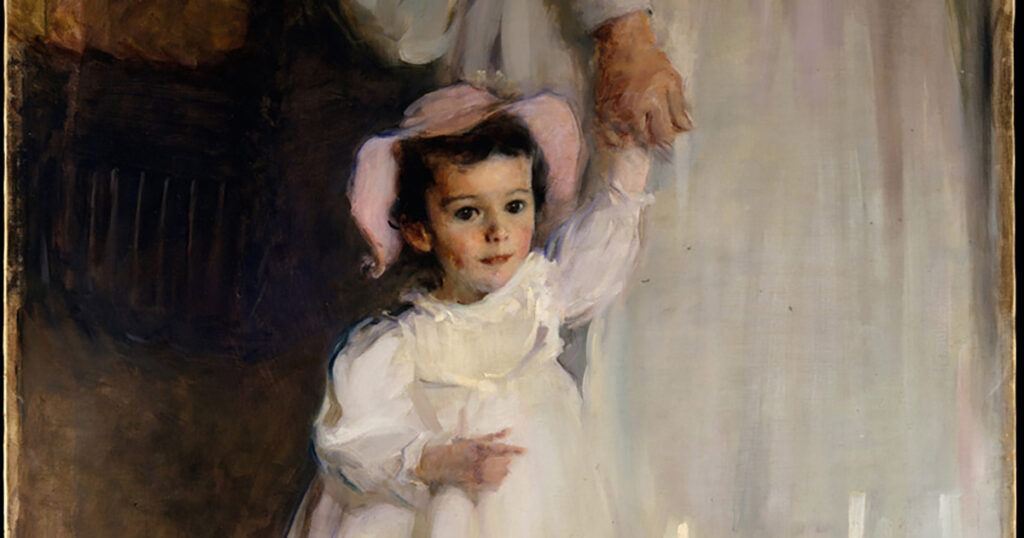

New here and find it invigorating! Love the works presented here. the “Head study – brunette ” totally made me cry!! So vivid! she looks so very young and vulnerable, so sweet, such innocence, so much to learn about life before her. I want to reach out and hug her.
Barbara
I wonder if he would take a commission ?
ciro caso
[email protected]
Hello,
I appologize for my contact through here but I don’t know any other way To do it.
As I read you comment I couldn’t help myself to comment back, as tou so close to Skip.
I would like to know an information about a especific work of Liepke, but I can find it anywhere and it was very important to me to know it has I been looking for some answers since ever!
I can leave here my e-mail if you want to help! I think Liepke would like to know thant I Look like exackly like one women of his paintings.
My e-mail is: [email protected]
Thank you for your time!
Best regards
Helena
I feel that he puts a lot of hos emotions into the colors of his paintings, while watching paint for the past 3 years ive know his son, i watch him oaint sometimes instead of doing anything with my friend haha its just amuzing how perfect he looks with the brush in his hand its like he can show exactly whats going on in his mind and paint it out through his amazing artistic skills
I am so proud of Skip, my nephew. His work is an inspiration to say the least. I especially treasure his originals I have that he painted in high school.
I have not had the opportunity to see Mr Liepke’s work in person. I do own a few of his exhibition catalogs and some printed examples of his illustration work.
i do admire Mr Liepke’s compostional and color skills. Where I begin the dissent in seeing him as “one of the greatest painters of all time” is in the generic character of his subjects and mediocre drawing skills. His people all look the same: big,dark eyes,pouting lips and red noses. In a way his people look like painterly animes or an updated version of the Margaret Keane paintings of big eyed kids I had read a article where Mr Liepke said he had worked on as many as twenty paintings at one time. Looking at his work available one can see the the abandonment of solid form in favor of a wash of color.
I think its strange to believe that only one person ever comes up with a style “first” and that anyone else is just copying and “Lacking Passion”. How many great movements in the past have been simultaneously started in completely separate parts of the world? If Liepke wants us to take something from his work, I think the main theme would be the universal human connection; therefore inferring that humans from all over the world could be feeling, expressing, and doing or creating the same things at the same time- without even knowing that they are unoriginal.
Maybe it was artists like John Singer Sargent and Thomas Eakins that helped to shape the similar artistic language of kobayashi and liepke. Both kobayashi and liepke capture a mood that is set by the figure but it is done in a thick, single-stroke style (like when liepke said letting every brush convey a message). Monet and Van gogh both had a similar impasto style. So, my guess is, when you combine the intention of capturing a mood through figurative art and combine it with concise, somewhat unfinished strokes, you get kobayashi and liepke… They paint similarly but not nearly close enough to have copied one another or “come up with the style first…”
I would also like to know who came first with this style – Kobayashi or Liepke. I think Skip’s drawing skills are more pronounced though…
It is interesting how his style conjures thoughts of Gustave Klimt and no one has mentioned this.
It is very interresting how similar Kobayashi’s and Liepke’s work is. They both worked as illustrators at Forbes and another publication as well.
As for me I hope they keep up the good and don’t mind me if I take an occasional cue from the body of their work, while working hard to keep my own artistic integrity. Love them both!
Is the painting’Head study Brunette’ available as a print?
Tony
Malcolm Liepke’s coffee table ‘retrospective’ book is available through Arcadia Gallery in New York. Just search Arcadia Gallery, New York. I recently purchased it. So inspirational!! —Mike
I have 3 prints by Liepk. “Cat Nap” “The Fitting”, and “First to Arrive”. The last 2 on Japon Paper. I just saw “First to Arrive” as an oil painting on this site.My print is marked as 10/10 artist proof. Excuse my lack of knowledge but is mine a seperate work or a computer/ photo reproduction?
I have been looking for his book. Does anyone know how I can get it?
Wow.. your art is sooo amazing. i wish i had your kind of talent
i find LIipke’s work to be powerful, and it has inspired me. Being a student of the arts, i have learned many things with gazing upon his work.
I have been a fan, and friend of Malcolm Liepke for years, and with out question, he is and will go down in history as one of the world’s great painters. I must say that I too am really amazed at the amount of copy cats that outright try to replicate his style. It’s great to be inspired by an artist, to even study how they work. But some of artwork that I’ve scene showing in the gallery scene is so horribly done, and lacks any of the passion of Mr. Leipke’s work.
There will be only one Malcolm Liepke, and as artists we must continue to create a personal statement with the artwork we create. Being influenced is one thing but many people are taking this way to far in regard to Liepke’s work.
Where can I find out more about Malcolm T. Liepke? There is very little information on the internet. I have been obsessed with his art ever since he showed at a local gallery. I do own his books from the Etinger Gallery I would love to purchase an original or even a print but I am unable to find anything.
Any information would help, thanks:)
What’s sad is that Mr. Liepke’s work is so inaccessible to the public. His originals are, of course, very pricey, but even reproductions are very expensive, and when he finally released a book, it cost over $100.
For the most part, all we see are tiny thumbnail images on the internet. It wasn’t until I picked up this magazine that I was able to see any brushwork detail. Thanks American Artist.
I have no quarrell with artists who emulate his style. It’s the only way that rank-and-file art lovers will have access.
There is a fine line between copying a style and being part of a movement. If you say Liepke started a movement, everyone is off the hook. Just as the kitsch artists whose work looks like Nerdrum’s
I too am a fan of Mr. Liepke’s work. I also am familiar with other artists of this genre, such as Milt Kobayashi. In fact, there is some debate as to who developed this style first.
Mr. Liepke is bound to influence other artists. Indeed, if he is as good as we think he is, I would be surprised if he didn’t.
However, any art historian would tell you that even Mr. Liepke has been influenced by other artists. It would be like saying that popular artists such as Jeremy Lipking and Dan Gerhartz are not credible even though they were obviously influenced by Richard Schmid.
Bottom line: any good art raises the bar for everyone that loves good art.
On the contrary, imitation is the sincerest form of flattery, and there is nothing essentially wrong with it.
I really enjoyed the article on Malcolm Liepke. I have followed Skip Liepke’s work for many years. He is unique. It is really too bad that so many otherwise good artists feel the need to copy his style; just look in any issue of most of the popular art mags and you will see Liepke “wannabe’s”. They don’t even pretend to not be copying his signature style. A real shame that they can’t paint with their own “voice” and have to copy another artist’s style.